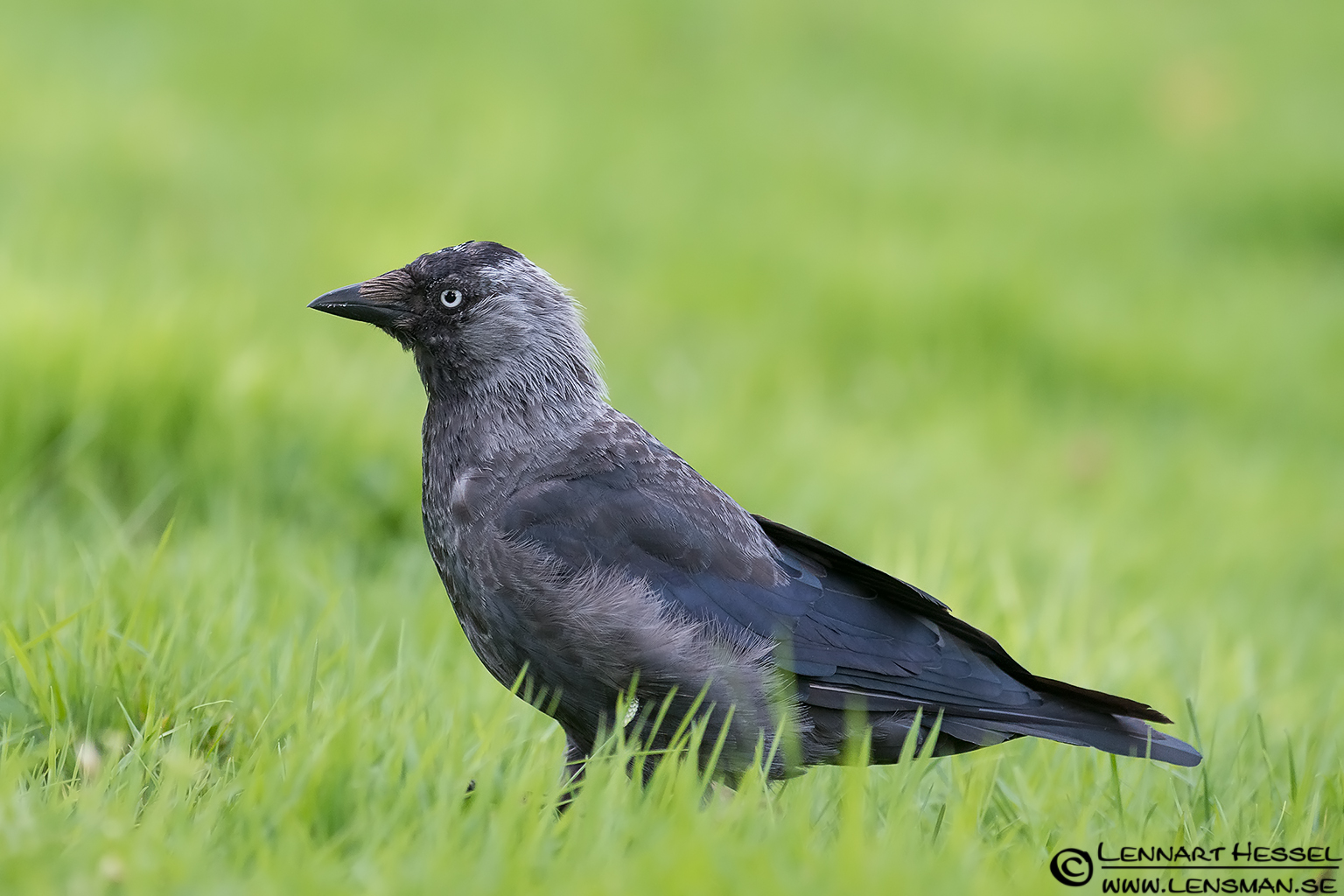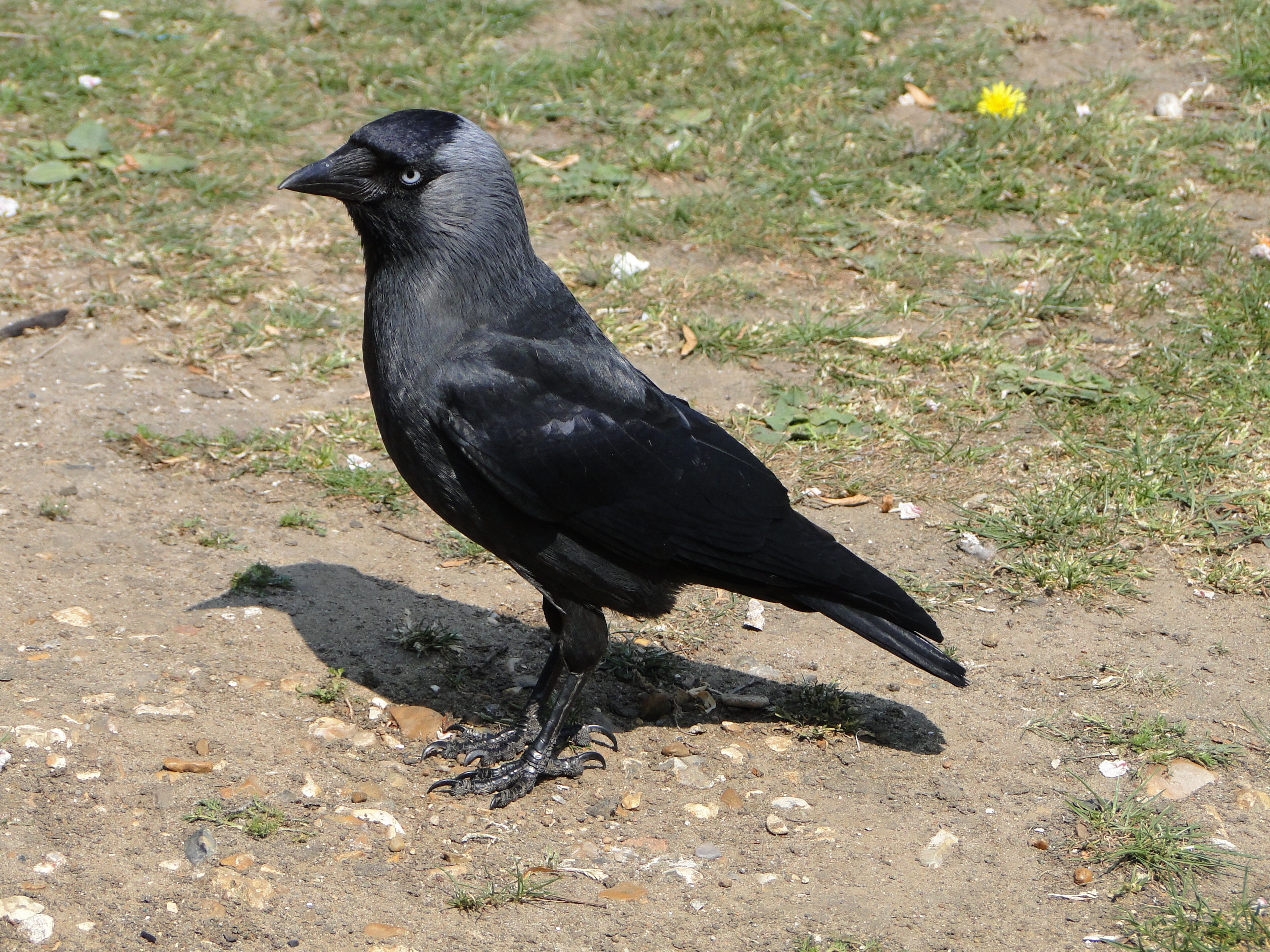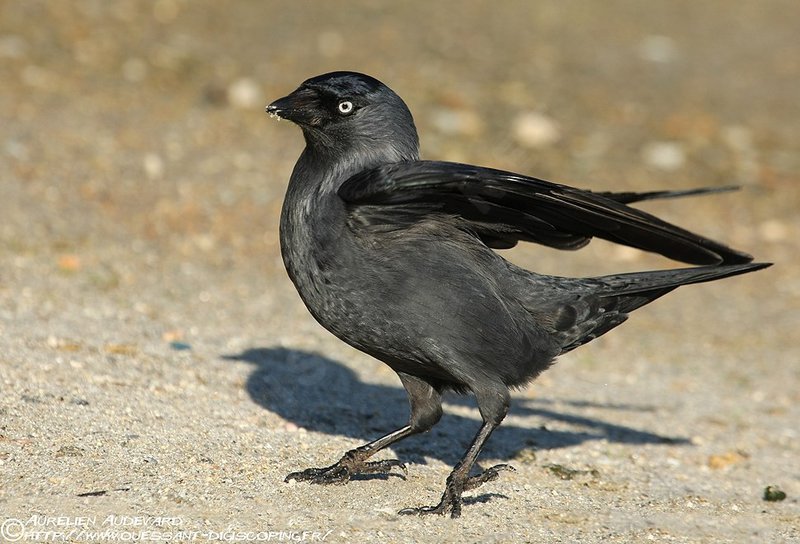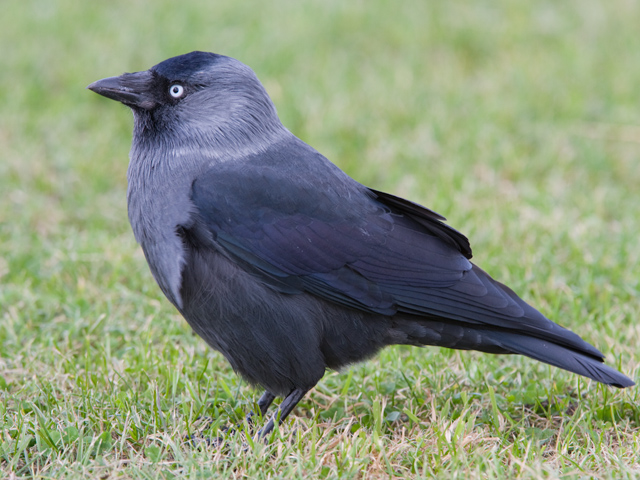
Corvus monedula
SUBFAMILY
Corvinae
TAXONOMY
Corvus monedula Linnaeus, 1758, Sweden. Four subspecies usually
recognized.
OTHER COMMON NAMES
French: Choucas des tours; German: Dohle; Spanish: Grajilla
Comъn.
PHYSICAL CHARACTERISTICS
13.26–15.21 in (34–39 cm); 4.86–9.27 oz (139–265 g). Upperparts
are grayish black with a slight bluish gloss. Head has a
black forecrown and dark gray rear crown, nape, and sides.
Wings and tail are black and glossy. Underparts are grayish
black. The short bill is black, as are the legs and feet.
DISTRIBUTION
Europe, western Asia, North Africa.
HABITAT
Wide variety of open country with trees, including areas of
human habitation.
BEHAVIOR
Sociable groups frequently engage in agile, tumbling flight
display, giving loud calls.
FEEDING ECOLOGY AND DIET
Mainly granivorous, except during breeding season when it
takes moth caterpillars from tree foliage.
REPRODUCTIVE BIOLOGY
Semicolonial. Stick nests built in tree holes, cliff faces, or artificial
structures. Generally four eggs April through May. Incubation
17–19 days; fledging about 30 days.
CONSERVATION STATUS
Not threatened. Abundant; appears to be spreading broadly
north and eastward.
SIGNIFICANCE TO HUMANS
Regularly nests in chimneys of inhabited buildings.
Other popular Animals
Photo Gallery of - Western jackdaw




 Animalia Life
Animalia Life